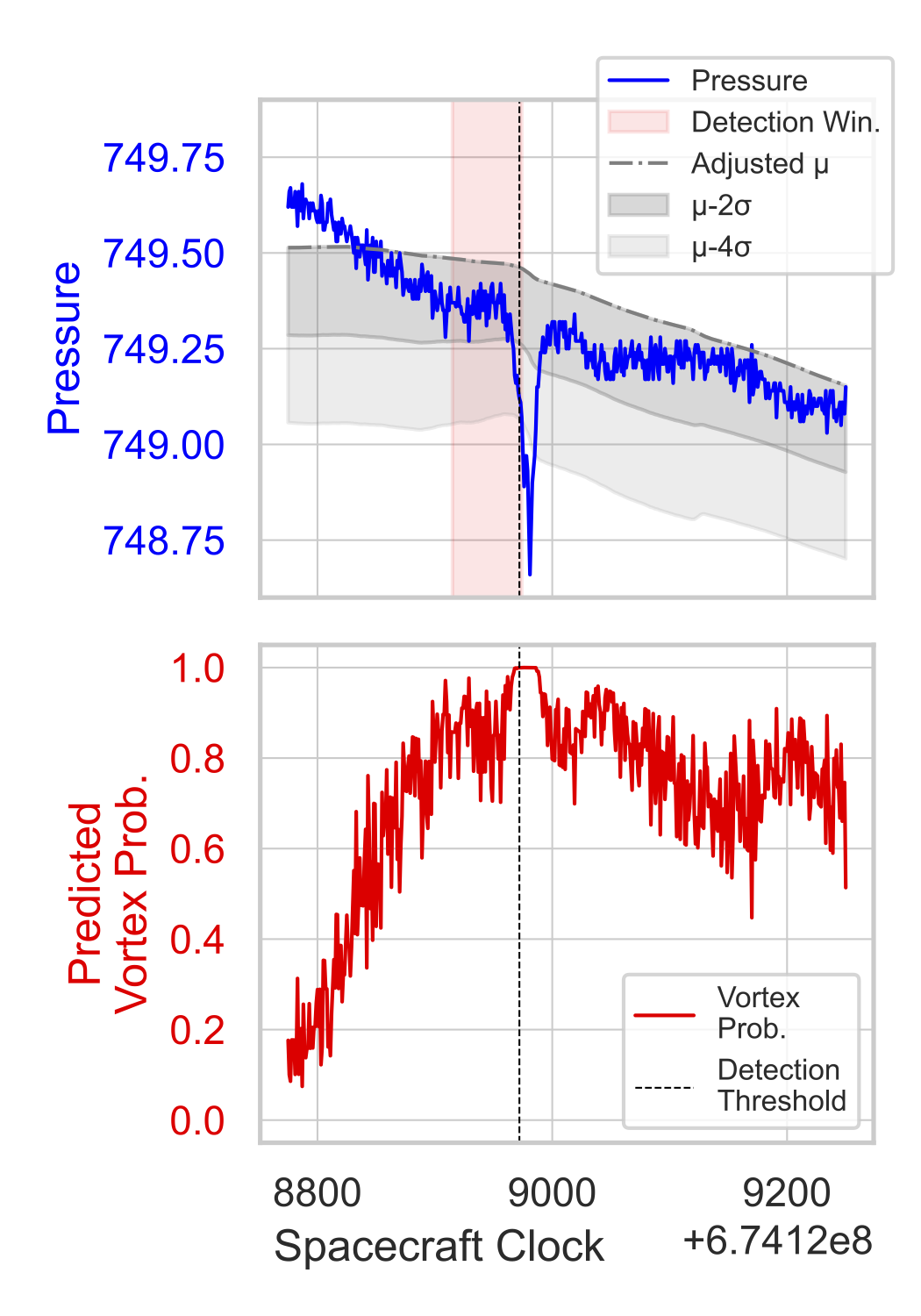Vortex Event Reactive Sensor Algorithm (VERSA)
Principal Investigator
Mark WronkiewiczEmail: Mark.D.Wronkiewicz@jpl.nasa.gov
Project Overview
We have a limited understanding of the atmosphere of Mars, especially at the surface. This is because only a handful of rovers and landers have successfully operated and collected weather data in-situ. In particular, we do not have a good grasp on how much dust is lifted from processes like straight line winds and dust devils. Since dust is a major driver in atmospheric dynamics (as important as water is to Earth’s atmosphere), more landers are needed to inform atmospheric science and guide future robotic and human exploration.
VERSA is an ML-based onboard dust devil detection system designed for small Mars landers. It enables autonomous detection of dust devils for power-constrained small spacecraft missions. VERSA relies on time series data to monitor the environment with a low power, pressure sensor signal. When the ML algorithm detects an approaching vortex, this signal can trigger an “alert mode” to turn on cameras, wind sensors, or other instruments to collect data only when something scientifically interesting is happening.
Approach and Results
We developed computationally light, ML models (meant for onboard use) to detect dust devils in 1 Hz pressure sensor data from the M2020 Mars Environmental Dynamics Analyzer (MEDA). This includes four approaches:
- Statistical approach, static: fits a normal distribution to the observed distribution of pressure deviations. Deviations large enough to exceed a tunable threshold (e.g., a large dip) trigger detections.
- Statistical approach, adaptive: adaptively tunes a threshold in a sliding window. It fits a line to historical data (previous 1000 seconds), uses this to detrend the data (subtracting the best fit line), and fits a normal distribution to the residual. As before, a tunable threshold is set on this distribution, which triggers when exceeded.
- ML approach, LSTM: a long short-term memory (LSTM) model was trained on overlapping 60-second data windows to detect whether or not the final point falls within a vortex
- ML approach, Transformers: We also used a vanilla transformer model with the same training/testing approach as the LSTM. The advantage is we can analyze the Transformer’s attention layer to improve interpretability concerning the types of signals identified by the model.
Early results are promising. The algorithms successfully identify early signs of dust devils >85% of the time for thresholds corresponding to 25% of the original MEDA data return rate, and >55% of the time for a threshold corresponding to only 5% of the original MEDA return rate. This indicates that onboard ML can detect, react, and capture much of the scientifically valuable data even with a very conservative power budget.

Mission Infusion
The Mars community is moving towards an exploration strategy that involves regular launches of cheaper, small spacecraft. As NASA looks to extend the Commercial Lunar Payload Services (CLPS) to Mars, algorithms like VERSA can help ensure we maximize the possible science advances of small landed missions. We continue to seek partners in preparation for the CLPS extension – please reach out if interested.
